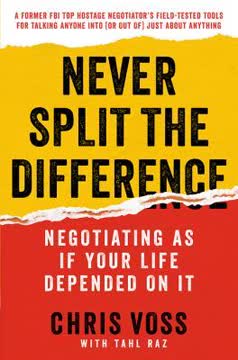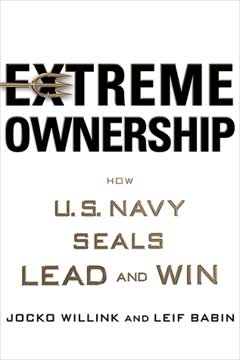Key Takeaways
1. Welcome to the Post-Trust Era: Skepticism is the New Default
Simply put, trust is dead.
A new reality. We live in an age where skepticism is rampant, replacing the trust that once existed in institutions, companies, and even individuals. Decades of accumulated negative experiences, coupled with increased access to information and a transformed media landscape, have eroded the benefit of the doubt. This post-trust era means people assume ulterior motives, doubt positive stories, and actively seek confirmation of their suspicions.
Consequences are real. This pervasive skepticism has tangible impacts on business and communication. Consumers are making purchasing decisions based on a company's overall reputation, not just the product itself, with 77% refusing to buy from distrusted companies (Edelman survey). Companies become easier targets for regulation and criticism, and even well-intentioned actions are viewed with suspicion, as seen in the rejection of a 401(k) auto-enrollment plan perceived as benefiting the employer.
Old rules don't apply. Traditional communication approaches, like simply stating facts or relying on authority, are ineffective. In this era, people challenge credibility upfront, look for contradictions, and assume bad motives. The rise of symbols (private jets, CEO pay) often overshadows substance, and the ease of finding negative information online reinforces skepticism.
2. Language is the Key to Rebuilding Trust
This book is about how to use language to undo the skepticism that a world of too much spin has created.
Words matter more than ever. While actions are crucial, language is the starting point for building or rebuilding trust in a skeptical world. Effective communication isn't about spin or manipulation; it's about using words strategically to overcome doubt when your facts, actions, and record are on your side but acceptance is the hurdle. It's about finding the "truth-space" where your message aligns with their worldview.
It's their language. The language of trust is fundamentally about the audience – their needs, concerns, fears, and desire for truth. It requires understanding who they are and speaking directly to them, not just reciting what you want to say. This means becoming an advocate for the customer, even when representing a company, much like the independent insurance agent who might not sell a specific policy if it's not right for the client.
Beyond words. While language is the foundation, trust requires alignment between words and actions. Language without supportive behavior creates a stronger basis for skepticism. This book provides the tools to use language to build trust when your underlying actions are sound, enabling you to navigate the sea of skepticism and connect with an audience that might otherwise tune you out.
3. Be Personal: Make Your Message About Them
The first rule of building trust is to accept the fact that selling a product or idea has little to do with your company, what you’re offering, or your ideas.
Focus on the audience. Effective communication starts and ends with the audience. Instead of focusing on your product's features or your organization's mission, you must make your message personally relevant to the listener. This goes beyond targeted marketing; it means speaking to individual situations and micro concerns, answering the fundamental question: "What's in it for me?"
Make it tangible and human. Abstract facts and figures often fail to resonate. Translate data into tangible terms that relate directly to the audience's life (e.g., taxi wait time vs. number of taxis). Use human stories instead of cold facts to connect emotionally. The healthcare industry, for example, often uses impersonal jargon ("patient," "procedure") instead of focusing on "you, your family, and your health," contributing to mistrust despite its life-saving work.
Be real. To build trust, you must make yourself or your organization seem real and human, not an emotionless entity reading a script. Explain your motives, outline goals, and talk about positive actions. A simple but powerful shift is changing "you" or "me" to "we" and "our," placing you on the same side as the audience. Hospital CEO Paul Levy's successful handling of layoffs by focusing on protecting lower-wage earners and using "we" and "us" is a prime example.
4. Be Plainspoken: Clarity Builds Credibility
If They Can’t Understand You, It’s Your Fault
Simplicity is the new sophistication. In the post-trust era, jargon-filled, overly complex language is no longer seen as a sign of expertise but as a barrier to understanding and a potential attempt to mislead. If your audience is confused, they blame you, not themselves. Plain language and accessibility are crucial for building trust.
Avoid "wonk" language. Professionals often develop industry-specific jargon, company acronyms, and job function dialects that are foreign to outsiders. Financial advisors using terms like "statistical arbitrage" or "merger arbitrage" immediately lose credibility with potential clients who feel baffled by BS. Effective communicators sound like experts without talking like them, adhering to the principle: "Think like a wise man, but communicate in the language of the people."
Simple doesn't always mean short. Clarity is the goal, not just brevity. While avoiding unnecessary words is important, it's better to use more words to tell a clear story than fewer words that leave people confused. Explaining a variable annuity as an "option for protecting a portion of your assets" is clearer and more trustworthy than technical definitions, even if longer. Ultimately, say enough to be understood, but not so much that your key message gets lost or overwhelmed.
5. Be Positive: Fear Tactics Backfire
Negativity Breeds Contempt
Fear paralyzes, it doesn't motivate. While fear-based selling has a long history, it is increasingly ineffective in the post-trust era. Instead of driving action, negative messages often turn people off and destroy trust. Consumers have become desensitized to scare tactics and resent those who use them, equating them with liars and cheaters due to past experiences (Y2K, bailouts, infomercials).
Focus on benefits and the future. Effective positive language turns facts into an optimistic view of the world without being overly Pollyannaish. It is forward-looking, emphasizing future benefits rather than dwelling on current problems or past mistakes. When discussing investments, focus on long-term strategy and opportunity, not the fear of market downturns. When a company faces a problem, focus on how it will change in the future to avoid a repeat, not on justifying past actions.
Be for something, not against others. Avoid attacking competitors, critics, or the status quo directly. This often backfires, making you seem partisan and less credible. Instead, articulate your own value proposition and focus on what you stand for. Even when addressing criticism, find common ground and acknowledge the other side's perspective before presenting your own. The music industry, facing piracy, gained more traction by acknowledging its responsibility and the need for balance than by simply suing downloaders.
6. Be Plausible: Perfection is Unbelievable
Life Isn’t Perfect; Neither Is What You Are Selling
Credibility requires realism. In a world of skeptics, promises that sound too good to be true are immediately rejected. The sales superlatives of the past ("best," "most," "guaranteed") now increase skepticism rather than interest. Plausibility has become a ticket-of-entry skill for building trust. This means acknowledging flaws, including caveats, and avoiding extreme claims.
Sincerity is the new black. Modern culture, from superheroes with dark sides to sitcoms about dysfunctional families, embraces imperfection. Consumers expect the same from companies and products. Denying your fallibility makes you seem unrealistic and easy to dismiss. Acknowledging shortcomings, like a product recall or negative review, builds credibility and shows you are working to improve, much like a job candidate discussing their weaknesses.
Neutrality, completeness, and avoiding superlatives. Plausible language is neutral, presenting information without dictating conclusions. It is complete, offering both pros and cons, like Progressive showing competitors' rates. It avoids overused superlatives that lack impact and baggage. Instead of saying you're the "best," explain why you are good, providing details and reasons. This approach is less about persuasion and more about providing unbiased information, allowing the audience to draw their own conclusions and build trust in the process.
7. Engage Before You Discuss: Get Them to Listen First
Are you really listening . . . or are you just waiting for your turn to talk?
Overcoming confirmation bias. People instinctively seek information that confirms their existing beliefs and filter out the rest. In a polarized world, this leads to monologues, not dialogues. To persuade skeptics, you must first find a way to break through this filter and get them to listen. Engagement is the crucial first step before attempting to discuss, sell, or change attitudes.
Understand their truth. Before saying anything, understand your audience's worldview, how they approach the issue, and what they already believe. This "Their Truth" may differ significantly from yours, but acknowledging it is essential. Creating detailed "personas" and thinking deeply from their perspective allows you to anticipate concerns and tailor your message. Ignoring Their Truth immediately erodes trust.
Find common ground and ask questions. Start the conversation by finding areas of agreement, getting the listener to nod their head. This creates a foundation of consensus before moving to persuasive arguments. Ask meaningful, open-ended questions that you don't know the answer to, putting the audience at the center of the dialogue. Avoid leading, throwaway, or self-serving questions. Asking allows you to understand their needs and builds a collegial relationship, shifting from "The more you tell, the more you sell" to "The more you ask, the more you engage."
8. Put Their Interests Before Yours: Become Their Advocate
It’s bigger than you and me . . . It’s all about me.
Aikido, not combat. Selling to skeptics is less about overcoming objections forcefully and more about flowing with their concerns, like in the martial art of aikido. Instead of defending your product or idea against challenges, you acknowledge, validate, and even amplify their concerns. This counterintuitive approach positions you as their ally and advocate, building trust precisely at moments where the sale might seem at risk.
Lead with vulnerability. When a customer raises a concern (e.g., car wind noise), don't dismiss it or pivot to other benefits. Acknowledge and validate their feeling ("Noise is important to you"). Then, agree in the first person and, if possible, amplify their concern with your own information ("I pay attention to this too, small issues loom larger"). This demonstrates you truly understand and share their perspective.
Add new, unbiased information. After acknowledging and amplifying, provide objective information that helps them make an informed decision. This isn't spin; it's giving them the facts, data, or resources (like comparing car noise levels or showing historical market performance) to evaluate the issue themselves. Companies like Progressive build credibility by transparently sharing information, even if it sometimes favors competitors. This approach puts the audience in control and builds a bond of trust that extends beyond the immediate transaction.
9. Provide Context Before Specifics: Frame the Narrative
In Washington, the clearer a statement is, the more certain it is to be followed by a “clarification” when people realize what was said.
Specifics without context are meaningless. Presenting facts, statistics, or product details without providing the necessary background allows the audience to interpret them as they see fit, often negatively in a skeptical era. Like looking too closely at pixels on a screen, individual facts lack meaning until placed within a larger picture. Context transforms disparate data points into a coherent narrative that makes sense to the listener.
Facts are not enough. There are too many facts, and they can be manipulated or presented selectively. Skeptics are wary of unqualified facts and statistics, assuming they are used to hide something. The same fact (e.g., death rate in a clinical trial) can be framed in vastly different ways (300% increase vs. 0.003% rate), leading to opposite conclusions. You must provide the context to ensure your facts are interpreted as intended.
Explain, provide perspective, set expectations. Context explains actions by providing the "why" behind decisions (e.g., airline asking passengers to clean up to save time/money). It provides perspective by comparing information to something the audience understands (e.g., biofuel impact equivalent to taking cars off the road, parabens naturally occurring in food). It sets expectations by framing the conversation and defining goals (e.g., mortgage company calling to help get payments back on track, not just to collect). Providing context, even negative context, builds trust by demonstrating transparency and helping the audience make sense of the information.
10. Communicate Trust Effectively in a Digital World
With the world of social media, iPhone apps, blogging, and even email and websites looking so different than traditional offline modes of communicating, it’s completely reasonable to ask if this new world of constant connection requires a different approach to using language to build trust.
Digital amplifies, but principles remain. The digital world changes how communication happens, but the core principles of building trust remain the same. Outrage spreads virally online, but can be fleeting. You don't control the message, but you gain invaluable real-time feedback. You compete with everyone, but can react quickly. The key is consistency between online and offline messaging – you can only have one message, communicated in the language of trust.
Leverage the medium. The digital world offers unique opportunities. You don't have to tell your whole story in a soundbite; once engaged, you can provide in-depth information on your site (like Google's detailed apology for Gmail outage). Be part of the conversation by responding to criticism, even if briefly, to avoid ceding the floor. Use linking and navigation to broaden your message by connecting to third-party information, positioning yourself as a trusted resource.
Transparency builds credibility. Be a provider, not a hider. Put information, even negative information or criticisms, on your own site. This keeps users engaged, makes your message more plausible, and allows you to provide context. Always allow comments on your site; while risky, it's better to have the conversation on your turf where you can ensure a fair debate and allow your advocates to defend you. In the face of online screamers, be the voice of reason and moderation. Ultimately, great customer engagement online, using digital tools to communicate when, where, and how customers want, is the best way to build trust.
11. Avoid Anti-Trust Language: Banned Phrases That Destroy Credibility
While it is great to land on a phrase or sound bite that really resonates with your audience, it is often much easier to improve the effectiveness of your communication by getting rid of the language that hurts you.
Words can break trust instantly. In a skeptical world, certain phrases, even if well-intentioned or factually accurate, immediately trigger mistrust and cause the audience to tune out. These "anti-trust laws" represent common pitfalls that undermine credibility faster than positive language can build it. Identifying and eliminating these phrases from your lexicon is a crucial first step in improving communication effectiveness.
"Are You Kidding Me?" statements. Phrases like "Trust me," "If I could promise you this, would you buy...," or "We speak your language" are met with immediate skepticism. They sound manipulative, reveal self-interest, or are simply unbelievable. If you need trust, earn it; if you speak their language, demonstrate it. Starting a statement with "honestly" or "frankly" implies that other statements might not be.
Sincerely Unbelievable Statements. Phrases intended to show care or alignment often ring hollow due to inconsistent experiences. "Your call is important to us" is undermined by long hold times. "We care about our customers" is rejected because people assume companies only care about profit; instead, say "Let us show you how we care." "Our interests are aligned" is unbelievable when the audience perceives a clear conflict of interest. These phrases fail because they state intentions that are contradicted by perceived reality.
Last updated:
Review Summary
The Language of Trust receives mixed reviews, with an average rating of 3.89 out of 5. Readers appreciate its practical communication tips and insights into building trust, particularly in sales and business contexts. Some find it outdated and limited by the author's perspective as a privileged white male. Critics note its relevance to modern skepticism and consumer behavior, while others feel it offers common-sense advice. The book's strengths lie in its practical approach to effective communication, though some readers desire updated content and broader perspectives on trust-building across diverse groups.
Similar Books










Download PDF
Download EPUB
.epub digital book format is ideal for reading ebooks on phones, tablets, and e-readers.




